Your Questions Answered
Live in Place Designs for your Accessible Home Design and Remodel
FAQs Asked and Answered
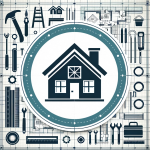
Most Common FAQs
We offer two ways to help you prioritize what’s right for you, and for your home to be more accessible. Depending on where you are in making decisions we can assist you. If you are at an early stage of gather information we are here to have a short call and educate you about our services, and discuss timing of getting work done. If you are ready to begin prioritizing the work to be done and engage in the actual planning for accessible design and remodeling we can start with our design services.
Aging in place design services can help individuals remain in their homes and maintain their independence as they age. By making modifications to the home, such as installing grab bars, widening doorways, and reducing tripping hazards, individuals can move around more easily and safely. This can also reduce the risk of falls and injuries, and ultimately improve their quality of life.
- You can submit one design solution to get comparable bids.
- You won’t have to rely on contractors to research accessible features when it’s not their specialty.
- You will bypass navigating a range of different design suggestions from contractors with uncertain qualifications.
- You’ll avoid having to re-do your renovation, because a contractor wasn’t aware of your health care needs and appropriate long-term solutions.
Having a blueprint that includes instructions and products a contractor will need to complete your accessible remodel project makes you contractor-ready. You will be empowered to get comparable bids, and we support the implementation of your design the whole way through.
- Customized lay-outs & architectural drawings
- Specialized products & install support
- Engineering guidance on best practices for accessible construction
The design requirements of your project, including layout, products, and any applicable technologies, will be professionally integrated into your final documents to ensure your project is fully well-defined. Our drawings will incorporate Universal Design approaches as well as current CAPS (Certified Aging in Place Specialist), and ADA guidelines. Your final design will serve as a technical document and scope allowing for accurate and competitive bidding as you search for your home renovation contractor.
Aging in Place products improve accessibility for the person using them. Also called accessible products they vary depending on the space being designed (or re-designed!). A well-designed master bathroom, for example, may include a curbless shower, roll-under vanity, shower bench, touchless faucets, walk-in tub and non-slip flooring – while a successful kitchen design considers appliances such as a roll-under cooktop, a microwave drawer and a swing door wall oven.
As accessible product specialists you can lean on us to recommend the products and technologies you need to make life a little easier. Since we specify your final product selections as part of your design deliverable, your contractor will already have a complete list of the accessible products that are right for you and your space.
Smart home automation can make your everyday life more convenient, efficient, and safe. It can offer improved security and even energy cost savings. From motion sensor lighting to smart thermostats and video doorbells, to fall monitoring sensors and voice activated emergency alert systems, we incorporate home technology solutions into your design so you can live at home with greater ease and peace of mind.
Aging in Place products improve accessibility for the person using them. Also called accessible products they vary depending on the space being designed (or re-designed!). A well-designed master bathroom, for example, may include a curbless shower, roll-under vanity, shower bench, touchless faucets, walk-in tub and non-slip flooring – while a successful kitchen design considers appliances such as a roll-under cooktop, a microwave drawer and a swing door wall oven.
As accessible product specialists you can lean on us to recommend the products and technologies you need to make life a little easier. Since we specify your final product selections as part of your design deliverable, your contractor will already have a complete list of the accessible products that are right for you and your space.
Multi-ability products and assistive technologies are increasingly making a difference to quality of life for many people, especially those living with chronic conditions. These products range from automatic door openers, to ramps, handrails, and lift systems, to remote patient monitoring (RPM) technology that enables health monitoring in the home. Incorporating the assistive technologies that are right for you into your home design can help make living with a chronic-disease more manageable.
Our proprietary assessment ensures your designs are the right solution for you and your loved ones. By starting with baseline knowledge of your health condition, we can design your new space for optimal symptom management and considering the future progression of your condition – even if that is simply aging. Through the assessment process, we are able to customize home design solutions. No detail is too small, no preference unimportant.
While many people may be of the mindset that design needs to take place in person, actually, even when we do local design work, only one on-site visit is made during the entire design process. Our proven remote process allows us to work with you no matter where you are located – and we are with you every step of the way – from collecting the information we need to start your design to checking on your design during construction.
You can work with our expert team from anywhere in the country. If you are not local, we send a trusted affiliate to your home to collect the site information we need at the start of your project. Details such as measurements, plumbing & electrical locations, and any other structural information. Then we create your new space using our versatile, interactive software.
We use design software that demonstrates the visual content our customers need, so it is like seeing the space in person. You will be able to experience your new space as it takes shape each step of the way through 3-D virtual tours. With videoconferencing, all you need to do is join the meetings! Our goal is to give you an experience that is seamless and stress-free.
After the initial Design Consult we send you a Design Proposal. Once that is signed the time it takes to complete the actual plans is approximately two weeks. This varies based on scheduling issues, complexity of the project, and your availability to make product choices.
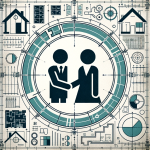
Homeowners ready to invest in professional services for home modification
At Live In Place Designs, we are experts in crafting accessible home environments tailored for aging in place. Our comprehensive services span from designing handicap-friendly bathrooms and kitchens to conceptualizing specialized additions like In-Law Suites. With a deep understanding of various chronic conditions, we ensure every corner of your home resonates with comfort, functionality, and personal touch.
Our “Person + Place” approach is a testament to our expertise and dedication. Beginning with a meticulous assessment of your unique needs and your home, we craft recommendations that seamlessly blend into your daily life. Partnering with our certified local contractors, we ensure that our designs are brought to life, making your home a sanctuary of familiarity and functionality.
Navigating home modifications, especially when managing a chronic condition, can be complex. It’s natural to feel overwhelmed about where to begin, the modifications required, potential costs, and finding a contractor with the right expertise. Our design consultation is crafted to empower and guide you through these concerns. It provides a clear picture of the necessary modifications, offers an estimated sense of costs (keeping in mind that local contractor costs can vary), and considers your unique needs, such as chronic conditions. By meticulously evaluating areas like doorways and bathrooms, we pinpoint and prioritize challenges. Ready to embark on a journey of informed home transformation? Contact us today to schedule your comprehensive design consultation.
Indeed, our team is enriched with a healthcare background, enabling us to craft solutions tailored to conditions like Parkinson’s, Multiple Sclerosis, and beyond. We delve deep into understanding the nuances of these conditions, ensuring our designs are always a step ahead.
Opting for an accessibility consultant over a residential architect ensures a focus on specialized health and mobility needs. While architects are experts in structural design, accessibility consultants emphasize individual challenges and ensure compliance with accessibility standards. Importantly, we partner with architects for permitting on structural issues, ensuring a comprehensive approach. This collaboration guarantees homeowners a living space that is both safe and tailored to their unique requirements.
Trusting in professional modifications for aging in place means entrusting your home to experts who blend safety, accessibility, and aesthetics seamlessly. Our dual expertise in healthcare and accessible design ensures that every modification is a harmonious blend of function and style.
Absolutely. Our designs balance aesthetics with practicality, ensuring homes are not only accessible but also visually appealing, enhancing the overall living experience.
Each project is as unique as the homeowner. While timelines vary based on intricacies and individual preferences, our unwavering commitment ensures timely and impeccable execution, always keeping your comfort and needs at the forefront.
By anticipating evolving needs and integrating adaptable features, our designs ensure homes remain comfortable and accessible, allowing residents to age gracefully in place.
The cost range for accessible home design projects can vary widely based on the specific modifications required, the scale of the project, and individual preferences. It’s essential to note that while our design consultation provides an estimated sense of costs, the final figures can fluctuate based on local contractor rates and the chosen products. We prioritize transparency in our pricing approach and collaborate closely with homeowners to craft solutions that align with both their budget and functional needs. If you are at an early stage of gather information we are here to have a short call and educate you about our services, and discuss timing of getting work done. If you are ready to begin prioritizing the work to be done and engage in the actual planning for accessible design and remodeling we can start with our design services.
Reach out for a free conversation with a specialist today
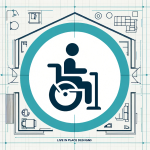
Individuals with specific chronic health conditions
Absolutely. Our designs emphasize ease, integrating lever-type faucets, easy-grip handles, and adaptable furnishings, catering to joint challenges and fostering aging in place.
Our designs prioritize dignity and privacy, utilizing features like half-walls and strategic layouts, ensuring comfort during the place remodeling process.
For MS patients, temperature control is crucial, so consider installing air conditioning or fans. Other home modifications for Multiple Sclerosis include ramps, widened doorways, stairlifts, and accessible bathrooms with safety features.
Ensure good air quality with air purifiers, maintain optimal humidity levels, and avoid materials that off-gas or trigger allergies. Open floor plans and easy access to outdoor spaces can also be beneficial.
Collaborate with professionals experienced in creating spaces for individuals with cerebral palsy. Ensure that the environment is free from obstacles, install safety rails, use cushioned flooring, and consider the individual’s mobility needs.
Create sensory-friendly spaces, use calming colors, minimize clutter, and provide sensory tools like weighted blankets or fidget toys. Soundproofing and controlled lighting can also help. Thoughtful home modifications for a sensory processing disorder can help soften the impact of hypersensitivities related to these conditions.
Our remodeling guide provides insights on tactile indicators, optimized lighting, and visual alert systems, ensuring a supportive environment for these impairments.
With accessible home design, we use clear layouts, color-coded spaces, and smart technologies, creating a comfortable and intuitive environment for cognitive conditions.
For Parkinson’s patients, consider installing grab bars, non-slip flooring, motion-sensor lighting, and handrails. Elevated toilet seats and walk-in tubs can also be beneficial. Specialized gadgets for Parkinson’s patients like weighted utensils can assist with daily tasks.
Smart home integrations like voice-activated controls and health-monitoring systems enhance safety, convenience, and adaptability, which are essential for live in place designs.
An autism-friendly home should have sensory-friendly spaces, soundproofing, safe zones, clear pathways, and minimalistic designs to reduce sensory overload. Calming colors and soft lighting can also be beneficial.
The design process for chronic diseases can offer comfort, safety, and accessibility through personalizing home modifications. Consider open floor plans, easy-to-access storage, adjustable lighting, and spaces for rest or therapy. Air quality and temperature control are also vital.
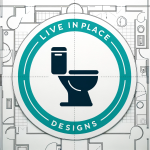
Handicap Bathroom Design & Remodeling
Handicap bathroom design focuses on ensuring accessibility and safety. This involves considering the basics of accessible design, implementing specific modifications like grab bars and non-slip flooring, and integrating walk-in showers. The design also emphasizes the importance of layout, space considerations, and the strategic placement of fixtures.
Absolutely! Modern handicap bathroom designs merge functionality with aesthetics. Luxury handicap showers and fixtures available that not only enhance accessibility but also add a touch of elegance and style to the bathroom.
Yes, there are several modifications tailored for the elderly, such as walk-in tubs, non-slip flooring, grab bars, and raised toilet seats. These modifications aim to reduce the risk of falls and ensure comfort and independence in the bathroom.
Luxury handicap showers offer enhanced accessibility features without compromising on style. They often come with non-slip bases, built-in seats, adjustable showerheads, and stylish designs, ensuring a safe yet spa-like experience.
We recommend scheduling a consultation with our experts. They’ll assess your specific needs, consider the existing bathroom design, and recommend modifications that align with your requirements and preferences.
Our blog offers a range of articles on designing accessible and stylish handicap bathrooms, from layout tips to luxury shower designs. You can explore these articles for insights and inspiration.
We’re eager to assist you! You can contact us directly through our website to schedule a design consultation. Our experts will guide you through the process, ensuring your bathroom meets both your accessibility and style preferences.
The goal of handicap bathroom remodeling is to create a space that’s safe, accessible, and comfortable for everyone, especially those with mobility issues or disabilities. While many modern bathrooms look great, they aren’t always practical for the elderly or disabled. The remodel aims to combine style with functionality, ensuring ease of use without sacrificing design.
The layout plays a pivotal role in ensuring seamless movement and accessibility. Proper space considerations, strategic placement of fixtures, and ensuring there’s enough room for mobility aids are all crucial. A well-thought-out layout enhances safety and functionality.
Yes, our designs consider various disabilities. From solutions tailored for Parkinson’s patients to modifications for wheelchair users, our aim is to create bathrooms that cater to diverse needs while ensuring safety and comfort.
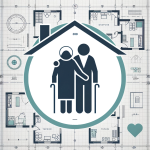
FAQ on Aging in Place Home Modifications
There are different stages of aging, each with its unique requirements. As individuals progress through these stages, their mobility and health needs change. Home modifications, tailored to each stage, ensure safety, comfort, and independence throughout aging.
Aging in place allows individuals to remain in the comfort of their homes, surrounded by familiar settings and memories. With the right home modifications, seniors can enjoy a safe, accessible, and comfortable environment, reducing the need for assisted living facilities.
Aging in place designs consider various health conditions, from mobility challenges to cognitive impairments. Modifications are tailored to address specific needs, ensuring safety and comfort for all residents.
The cost varies based on the extent of modifications required. However, investing in aging in place often proves more cost-effective in the long run compared to the expenses of assisted living facilities. Plus, there are financial assistance programs available to help with costs.
Yes, we provide specialized aging in place design services. Our team collaborates with you to create designs catering to your needs while ensuring your home remains stylish and welcoming.
We recommend reaching out to our team for a consultation. Our experts will assess your home, understand your specific needs, and provide tailored solutions to ensure you can live safely and comfortably in your home.
While every room has its considerations, bathrooms and kitchens often require significant modifications due to their functional nature. This includes non-slip flooring, grab bars, accessible fixtures, and more. However, a comprehensive assessment will highlight specific needs for each room.
Common modifications for aging in place include installing grab bars, widening doorways, adding ramps or stairlifts, modifying bathrooms for accessibility, and adjusting kitchen layouts for ease of use.
Regular assessments and updates are essential. Your needs may change as you age, and it’s essential to adapt your home accordingly. Our team can guide you through this process, ensuring your home remains a haven.
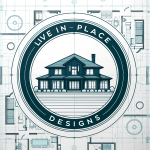
Homeowners looking for both essential & luxury solutions for home modifications
Our team merges aesthetics with functionality. We integrate premium materials and innovative solutions, ensuring homeowners enjoy luxury without compromising on accessibility.
Absolutely. Our design consultation process caters to both essential and luxury preferences, ensuring your home reflects your style while ensuring optimal accessibility.
Every material and solution in our accessible designs is rigorously tested. Our luxury modifications look exquisite and are built to last, ensuring long-term satisfaction.
Understanding the homeowner’s vision is paramount. Our design & remodeling process is collaborative, ensuring that luxury elements align perfectly with the individual’s lifestyle and preferences
Simply contact Live in Place Designs for a consultation. Our experts will guide you through every step, ensuring your home transformation journey is smooth and satisfying.
Our company in blends architectural excellence with a deep understanding of individual needs, offering tailor-made luxury solutions that resonate with the homeowner’s lifestyle.
Our luxury handicap showers incorporate zero-threshold entries, anti-slip surfaces, and premium finishes, offering an elegant yet functional aging experience.
Our designs seamlessly integrate smart home technologies with luxury elements, providing homeowners with a contemporary, comfortable, and convenient living environment.
Our team continuously researches, attends design expos, and collaborates with global luxury brands. This ensures our place designs remain at the forefront of luxury home modification trends.
Yes, we offer a third party financing option tailored to suit varied budgets, ensuring homeowners can realize their dream of a luxurious and accessible home.
Just have some questions. Contact us and schedule a free initial call.
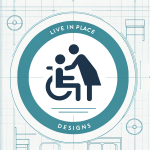
Individuals with disabilities or their caregivers
Modifications for children with disabilities might include installing safety gates, creating sensory-friendly spaces, lowering switches and controls, using non-slip mats, and creating an accessible play area. Each child’s needs are unique, so customization is crucial.
Wheelchair accessibility can be enhanced by installing ramps at entrances, widening doorways, lowering countertops, installing roll-under sinks, and ensuring that hallways are spacious enough for easy maneuverability.
Caregivers can provide insights into the specific needs of the individual, help in identifying potential hazards, assist in the selection of appropriate modifications, and ensure that changes are user-friendly and functional.
An effective autism sensory room should have calming elements like soft lighting, tactile surfaces, weighted blankets, and sensory toys. Soundproofing, safe spaces, and interactive elements can also be beneficial.
Ensure that the living space is free of hazards, provide alternative accommodations if necessary, and collaborate closely with professionals to ensure modifications meet safety standards.
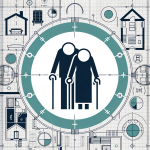
Elderly individuals or their caregivers/relatives
The stages of aging at home encompass the changes individuals experience as they grow older. These stages highlight seniors’ evolving needs and challenges, from minor adjustments to significant home modifications to ensure safety and comfort.
Aging in place allows seniors to remain in their familiar environment, independent, and connected with their community. It can also be more cost-effective than moving to assisted living and provides a sense of comfort and security.
Caregivers can conduct regular home safety assessments, install grab bars and non-slip mats, ensure proper lighting, and remove tripping hazards. It’s also essential to consider the specific needs of the elderly individual, such as mobility aids or medication management systems.
As we age, our physical abilities may start to decline, making it more difficult to navigate our homes safely and comfortably. This is especially true for those with disabilities or mobility limitations. Fortunately, there are many home modifications for the elderly or disabled that can be made to improve accessibility and independence.
Luxury handicap showers combine accessibility with aesthetics. They offer barrier-free entry, seating, adjustable showerheads, and stylish designs, ensuring a safe yet luxurious bathing experience.
Yes, many designs prioritize the needs of the elderly, such as single-level living, open floor plans, wider doorways, and accessible bathrooms and kitchens. These designs ensure safety while promoting independence.
Look for professionals with credentials in aging-in-place design. Organizations like the National Association of Home Builders (NAHB) offer certifications for professionals skilled in creating accessible home environments called CAPS (certified aging in place specialists, trained in modifications for individuals aging in place). We are CAPS Certified.
Walk-in tubs provide a safe and therapeutic bathing experience. They reduce the risk of falls, offer hydrotherapy benefits, and can be equipped with features like handrails, non-slip flooring, and easy-to-use controls.
Technology offers solutions like medical alert systems, smart home devices, and medication reminders. These tools enhance safety, provide real-time monitoring, and ensure timely emergency assistance.
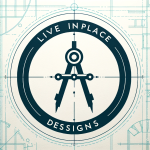
Contractors or designers looking for accessible design services
An aging-in-place bathroom design prioritizes safety and accessibility. Features include non-slip flooring, grab bars, walk-in tubs or barrier-free showers, and a raised toilet. Proper lighting and lever-style faucet handles also enhance usability.
The article “Handicap Bathroom Layout Tips” on the Live In Place Designs website provides comprehensive guidance on creating a functional and safe bathroom space for individuals with mobility challenges.
Incorporating universal design principles, such as wider doorways, ramped entrances, and open floor plans, ensures accessibility. Consulting with professionals who specialize in accessible design can provide tailored solutions for specific needs.
Key considerations for an aging in place remodel include assessing current and future mobility needs, ensuring safety in high-risk areas like bathrooms, enhancing lighting for better visibility, and making daily tasks more manageable through ergonomic design.
Look for contractors with experience in aging-in-place design and modifications. Check their credentials, ask for references, and ensure they understand the specific needs and challenges of creating an accessible home environment.
Yes, handicapped bathroom designs prioritize safety, accessibility, and ease of use. This includes barrier-free showers, grab bars, non-slip flooring, and accessible sink and toilet heights.
Aging-in-place modifications can increase a home’s value by making it more accessible and appealing to a broader range of potential buyers, especially those looking for homes that can accommodate multi-generational living or specific accessibility needs.
Walk-in showers eliminate the need to step over a tub edge, reducing fall risks. They can be equipped with non-slip flooring, seating, and grab bars, making them safer and more comfortable for individuals with mobility challenges.
Ensure clear communication with the contractor about the needs and routines of the elderly residents. Set up temporary safety measures, keep pathways clear, and consider relocating the elderly individual to a safer space during significant renovations.
Architects bring valuable strengths to enhance remodeling projects. Their architectural design expertise includes structural design, building codes, and construction knowledge. However, while architects play a significant role in home building, their expertise may not align with the specialized needs of accessible or aging in place design.
